
| Batlle of Žalgiris ( Tannenberg, Grunwald ) |
  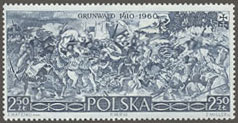
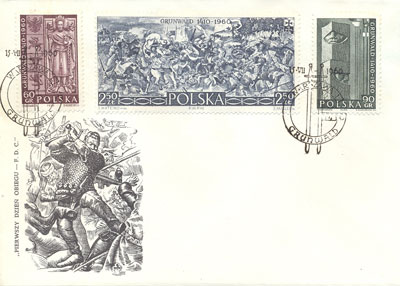
The Battle of Grunwald or Battle of Tannenberg took place on July 15, 1410 between the Kingdom of Poland, the Grand Duchy of Lithuania and their allies on one side, and the Knights of the Teutonic Order on the other.
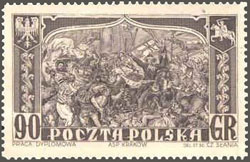
It was the decisive battle of the Polish-Lithuanian-Teutonic War (1409-1411) and one of the greatest battles of medieval Europe. The names Şalgiris (from the Lithuanian şalia giria) and Grunwald (from the German grüner Wald) both translate as "Green Forest." It was also called Zielone Pole ("Green Field") in Old Polish, and, in German, Grunenfelde or Grunefeld ("Green field") in the oldest texts.
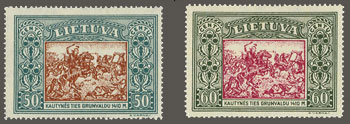
On June 30, 1410, the forces of Greater Poland and Lesser Poland crossed the Vistula over a pontoon bridge and joined with the forces of Masovia and the Grand Duchy of Lithuania. Jogaila's(Jagiello's) Polish forces and the Lithuanian soldiers of his cousin Vytautas the Great (to whom Jogaillo had ceded power in Lithuania in the wake of his marriage to the Polish queen) assembled on July 2, 1410. A week later they crossed into the territory of the Teutonic Knights, heading for the enemy headquarters at the castle of Marienburg (Malbork). The Teutonic Knights were caught by surprise.

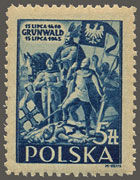 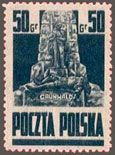 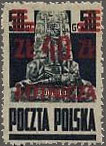
In the early morning of July 15, 1410, both armies met in the fields near the villages of Grunwald, Tannenberg and Ludwigsdorf. Both armies were dislocated in line formations. The Polish-Lithuanian army was set up in front of the villages of Ludwigsdorf and Tannenberg. The left flank was guarded by the Polish forces of king Jogaila(Jagiello) and composed mostly of heavy cavalry. The right flank of the allied forces was guarded by the army of Grand Duke of Lithuania Vytautas, and composed mostly of light cavalry. Among the forces on the right flank were banners from all over the Grand Duchy, as well as Tatar skirmishers. The opposing forces of the Teutonic Order were composed mostly of heavy cavalry and infantry. They were aided by mercenaries from Western Europe called "the guests of the Order," and some other Knights including those of the Knights Templar who had been summoned to participate by a Papal Bull.
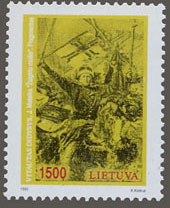 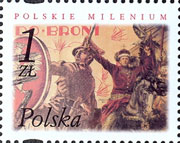
The exact number of soldiers on both sides is hard to estimate. Recent historians estimated the Polish-Lithuanian forces at 16,000-18,000 Polish cavalry and 6,000-8,000 Lithuanian light cavalry, with the Teutonic Knights fielding 13,000-15,000 heavy cavalry. Others estimated the overall strength of the allied forces at 18,000 Polish cavalry and 11,000 Lithuanians and Ruthenians, with the opposing forces bringing 16,000 soldiers.
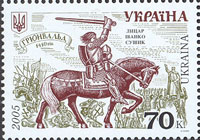 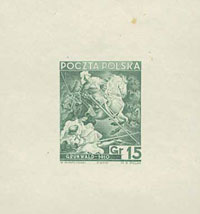
The forces on both sides were composed of troops coming from a variety of countries and lands. Apart from units fielded by lands of Poland, Grand Duchy of Lithuania and the Teutonic Order, there were also mercenaries from Western Europe (most notably Alsace, Lorraine, German Countries, Moravia, Bohemia and probably Moldavia.
 
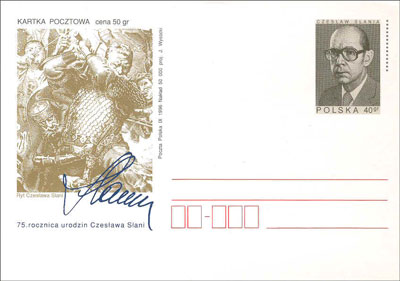
The defeat of the Teutonic Order was resounding. About 8,000 Teuton soldiers were killed in the battle, and an additional 14,000 taken captive. Most of the approximately 250 members of the Order were also killed, including much of the Teutonic leadership.
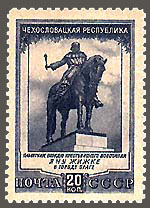 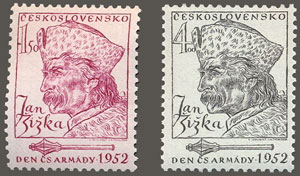
The Peace of Thorn (Peace of Torun) was concluded as a result of the Battle of Grunwald, in which Poland annexed the Dobriner Land (Dobrzyñ Land) and Lithuania recovered Samogitia. This is thought to be a diplomatic defeat for Poland and Lithuania as they pushed for attempts to dismantle the Teutonic Knights state altogether. However, while the Poles and Lithuanians were unable to translate their military victory to greater political gains, the indirect results of the battle were much worse for the Teutons.
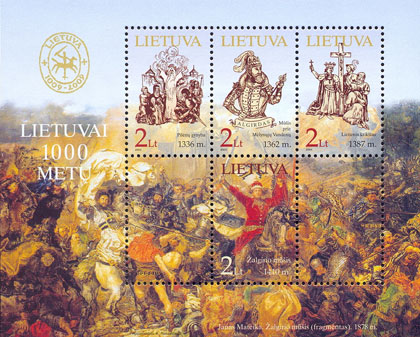
The victory at the Battle of Grunwald or Şalgirio mûğis in 1410 is synonymous to the peak of the political and military power of the Grand Duchy of Lithuania. The demise of the Teutonic order ended the period of German expansion and created preconditions for the political stability, economic growth and relative cultural prosperity that lasted until the rise of Muscovy in the late 16th century. In the Lithuanian historical discourse regarding the battle there is a lasting debate and controversy over the role played by the Lithuanian-born king of Poland Jogaila, and his cousin, the Grand Duke of Lithuania, Vytautas, the latter usually being favoured as a national hero.
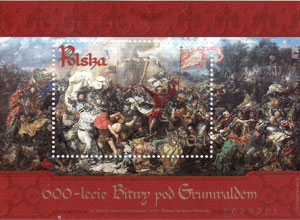 

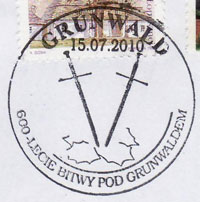 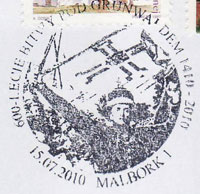
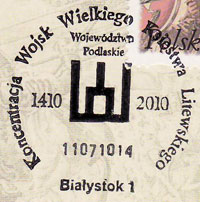 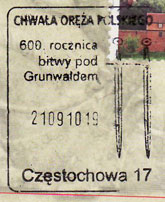
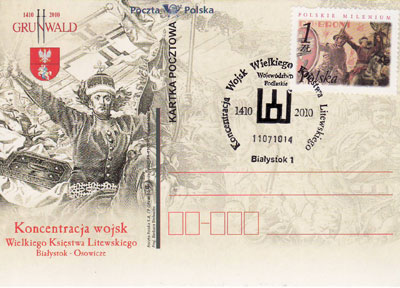

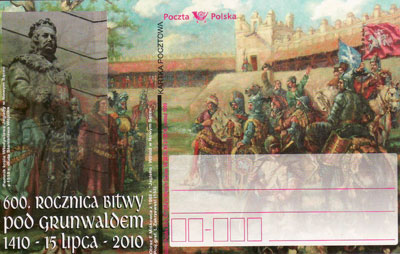
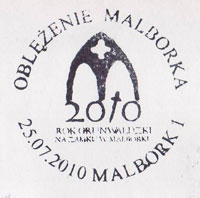 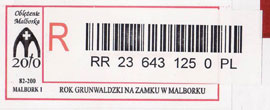
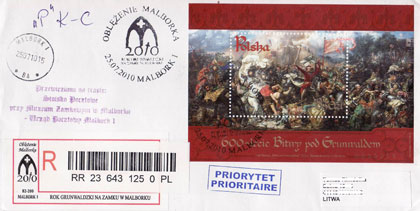
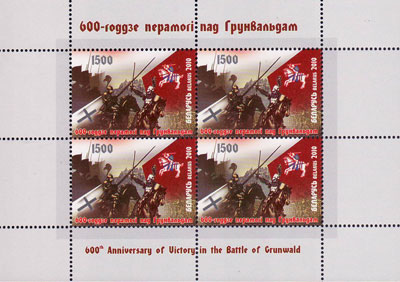

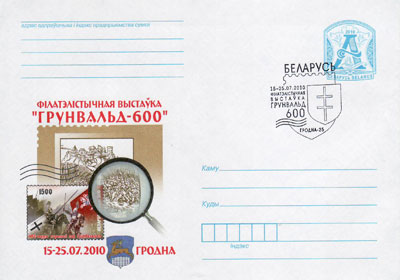
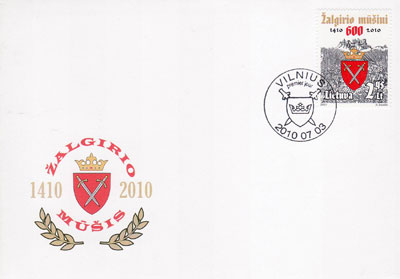
Leading Lithuanian basketball and football teams are both called "Şalgiris" to commemorate the victorious battle BC Şalgiris and FK Şalgiris.
 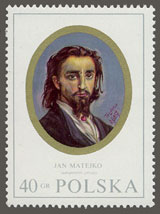
Jan Matejko (1838-1893) was a painter known for paintings of notable historical political and military events. His most famous work "The Battle of Grunwald", oil on canvas, 1878, 426 x 987 cm, exposed in National Museum in Warsaw.
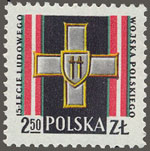 
The Cross of Grunwald medal was a Polish military decoration created in 1943 by the commander of the Gwardia Ludowa (confirmed in 1944 by the Krajowa Rada Narodowa) which was awarded for heroism in World War II.
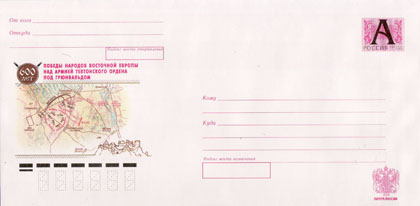
|